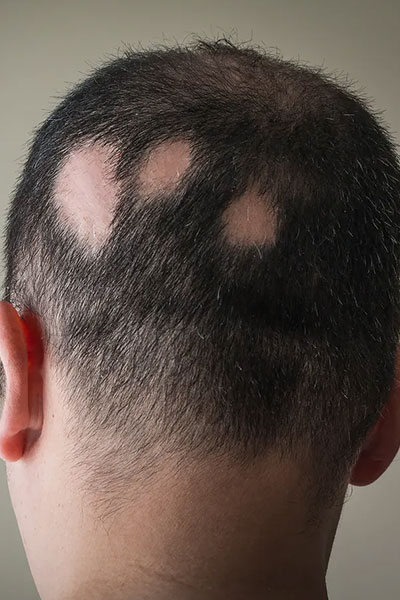
Causes & Types Of Alopecia Areata
Alopecia areata is a disease that happens when the immune system attacks hair follicles and causes hair loss. Hair follicles are the structures in skin that form hair.
It can begin at any age; however, most people develop it during childhood or their teenage years. About half them see their hair regrow within 12 months without treatment. If a parent or close blood relative has (or had) alopecia areata, a child has a greater risk of developing this disease. While the risk is greater, not every child with this increased risk will get alopecia areata.
Typically begins with sudden loss of round or oval patches of hair on the scalp. Around the edges of the patch, there are often short broken hairs or “exclamation point” hairs that are narrower at their base than their tip. Some people may experienced tingling, burning, or itching on patches of skin right before the hair falls out.
There are three main types of alopecia areata:
Patchy alopecia areata – In this type, which is the most common, hair loss happens in one or more coin-sized patches on the scalp or other parts of the body.
Alopecia totalis – People with this type lose all or nearly all of the hair on their scalp.
Alopecia universalis – In this type, which is rare, there is a complete or nearly complete loss of hair on the scalp, face, and rest of the body.
Spot the Difference



